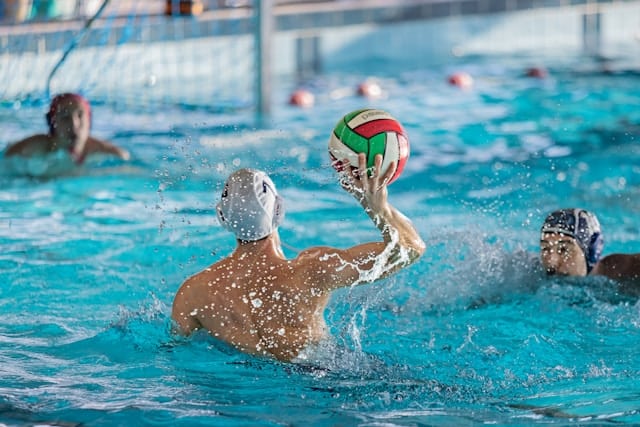How Can Data Analytics Optimize Team Strategy in Water Polo Matches?

The emerging field of data analytics has taken the sports industry by storm, spearheading a revolution in how teams train, strategize, and perform. In this extensive exploration, we shall delve into the world of water polo, a sport that combines the athleticism of swimming with the tactical prowess of team sports. With a focus on the influence of data analytics, we’ll dissect how this science is revolutionizing water polo, from game strategy to player performance evaluation.
The Intersection of Data Analytics and Sports
In the realm of professional sports, the adoption of data analytics has undergone a remarkable shift. More than just a trend, it has become a necessity for teams aiming to gain a competitive edge. With the availability of extensive data, ranging from game statistics to individual player performance metrics, the power of analysis is significant.
A lire également : How to Structure Nutritional Support for Recovery in Athletes with Metabolic Syndrome?
Google Scholar and PubMed are replete with studies that highlight the importance of data analytics in sports. Indeed, research shows that data-driven insights can drastically improve a team’s competitive edge. This isn’t just a theory; it’s a fact validated by countless real-world examples from various sports disciplines, water polo included.
Applying Data Analytics in Water Polo
The application of data analytics to water polo is an exciting and complex endeavor. This sport demands a high level of physical fitness, strategic acumen, and seamless teamwork. Each game is a dynamic, fast-paced battle that requires teams to adapt and react in real-time.
En parallèle : What’s the Impact of Pre-Game Visualization on Performance in Professional Darts Competitors?
Water polo’s unique combination of individual prowess and team dynamics makes it a prime candidate for data analytics. By drilling down into player-specific data, teams can tailor training programs to enhance individual performance. By taking a broader view, teams can optimize their tactics and strategies for each match.
Investigations on PubMed and other academic platforms have revealed the significant impact of data analytics on water polo. They have demonstrated the potential of data-driven strategies to enhance player performance and team strategy, which are critical in a competitive environment.
Data Analytics and Training Effectiveness
The impact of data analytics isn’t just confined to match day. It also extends to the training of athletes. Using data, coaches can monitor the progress of individual players and tailor their training regimen for maximum effectiveness.
Performance indicators such as swimming speed, shooting accuracy, and defensive efficiency can be tracked over time. This data provides a clear picture of an athlete’s progress and highlights areas for improvement. In this way, data analytics can guide the formulation of highly personalized training programs that cater to the specific needs of each athlete.
Moreover, by analyzing the perceived exertion of players during training, coaches can better manage fatigue and avoid overtraining. This approach ensures that athletes are in peak condition when it’s time for the match.
Data Analysis in Real-Time
Data analysis during a live water polo match provides teams with valuable insights that can inform immediate, tactical decisions. Real-time data analytics can highlight patterns, trends, and weaknesses that may not be apparent to the human eye.
For instance, data can reveal the most successful shooting positions, the effectiveness of defensive formations, and the impact of player substitutions. These insights can guide the team’s strategy and tactics, enabling them to adapt to the evolving dynamics of the game.
By feeding this data to the coaching staff during the game, they can make informed decisions about player substitutions, tactical adjustments, and overall game strategy. The result is a more dynamic and adaptable team, capable of responding effectively to the challenges of each match.
The Future of Data Analytics in Water Polo
The future of data analytics in water polo looks promising. As technology continues to evolve, so too will the depth and variety of data available for analysis. Wearable technology, video analysis software, and sophisticated data analysis tools are just a few of the innovations set to shape the future of this field.
As more data becomes available, the insights that can be gleaned will only become more profound. This will undoubtedly result in even more targeted training programs, innovative game strategies, and an enhanced understanding of the sport.
Ultimately, embracing data analytics isn’t just a pathway to success for water polo teams – it’s an absolute necessity in today’s competitive sports landscape. The teams that harness the power of data will be the ones that thrive on the world stage, and the world of water polo is no exception.
Enhancing Performance Through Data Analysis in Water Polo Training Sessions
Training sessions play a pivotal role in honing the skills of water polo players towards optimal performance. The integration of data analytics in these sessions can yield invaluable insights into the individual strengths and weaknesses of each player. This information can then be used to create personalized training programs that target specific areas for improvement.
In water polo, key performance indicators such as heart rate, perceived exertion, and perceived recovery are crucial metrics that can be tracked using data analytics. When analyzed over a period of time, this data can provide coaches with a deeper understanding of a player’s current fitness level. This helps in determining the intensity and duration of training loads to be assigned, consequently minimizing the risk of overtraining and injury.
For example, using data analytics, coaches can track the internal training load of each player. This refers to the physiological stress that a player experiences during training, which can be measured using metrics like heart rate and perceived exertion. According to a study on Google Scholar, monitoring this internal load can help coaches adjust training loads for each player, ensuring they are training at the right intensity for optimal performance.
Similarly, session RPE (rate of perceived exertion) is another key metric that can be tracked. This involves asking players to rate their perceived exertion after each training, and this data can be used to monitor recovery and prevent overtraining.
Overall, this integration of data analytics in training sessions allows for a more scientific and evidence-based approach to training, resulting in improved performance and lower injury rates among water polo players.
Data Analytics and Water Polo: A Winning Strategy
Embracing data analytics in water polo is no longer optional, but a strategic necessity. A review of studies available on PubMed and Google Scholar confirms that data-driven strategies significantly enhance both individual player performance and overall team strategy.
A study published in Sports Med provides evidence that the use of data analytics can improve the efficiency of player substitutions and optimize playing time. By studying game statistics, coaches can identify patterns and trends to determine which players perform best under different game conditions. This data-driven approach can therefore inform strategic decisions during games, such as when to substitute players, and how to distribute playing time effectively.
Moreover, data analytics can also help in the optimization of training regimens. A study in Strength Cond Res showed that individualized training programs, based on data analysis of each player’s performance, can enhance the overall effectiveness of team performance. By identifying strengths and weaknesses, coaches can tailor training sessions to improve upon weaknesses and capitalize on strengths.
In conclusion, data analytics provides a methodical and insightful approach to optimizing team strategy and player performance in water polo. Through the analysis of game statistics, training load, and individual performance metrics, teams can gain a competitive edge and elevate their game to new heights. As advancements in technology continue to provide increasingly sophisticated data analysis tools, the future of water polo will undoubtedly be influenced by the insightful power of data analytics. The teams that fully embrace this digital revolution will be the ones that thrive in the competitive landscape of water polo.
